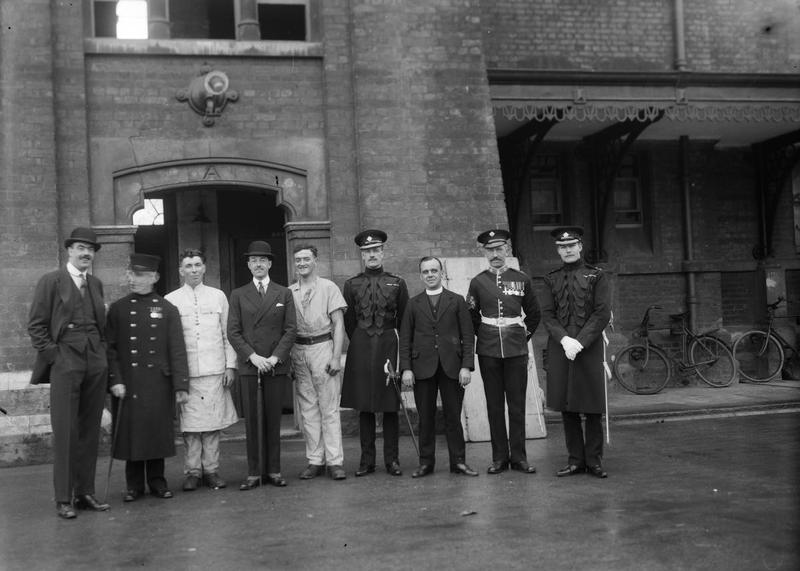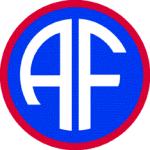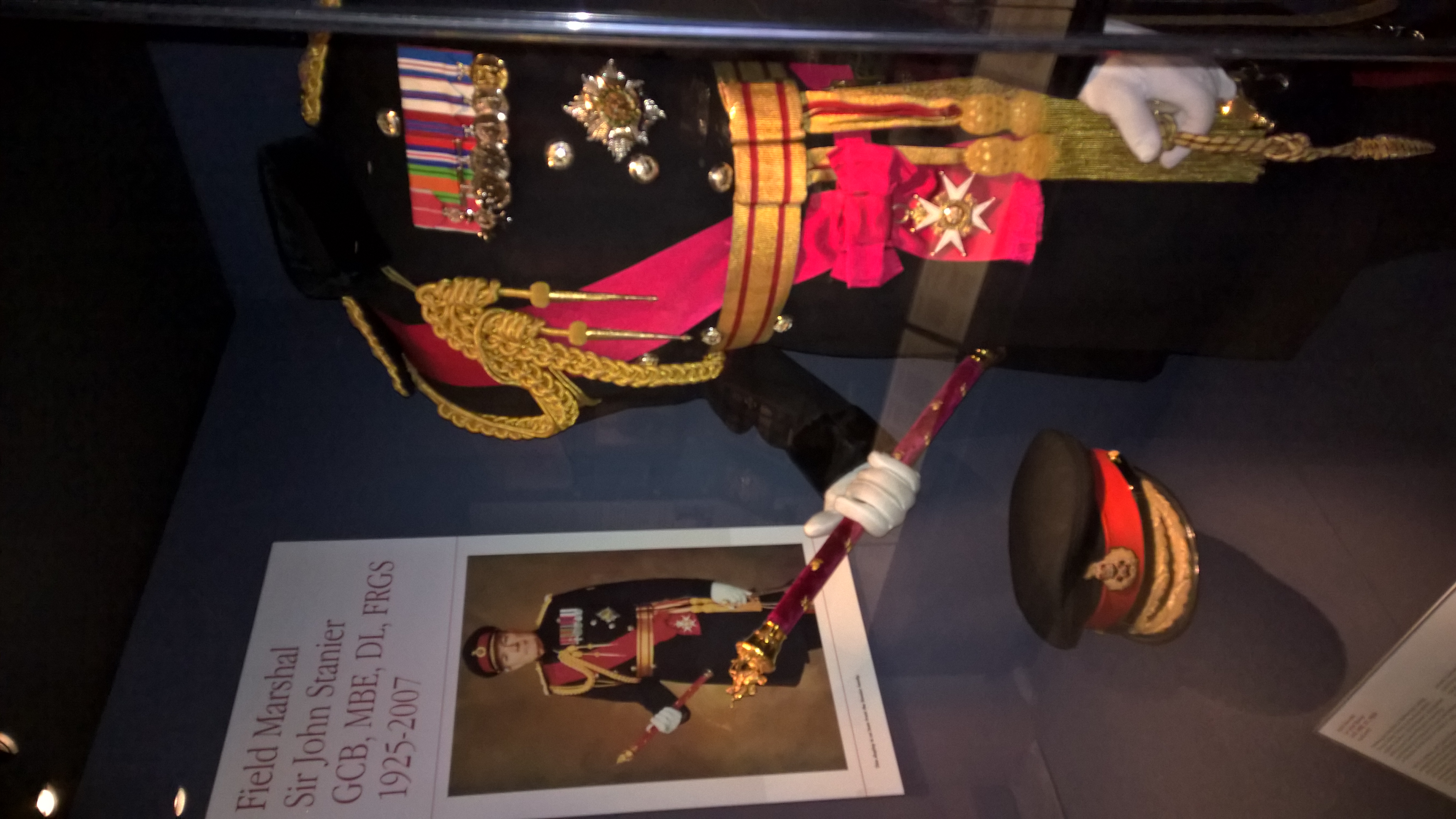|
Harold Alexander
Harold Rupert Leofric George Alexander, 1st Earl Alexander of Tunis, (10 December 1891 – 16 June 1969) was a senior British Army officer who served with distinction in both the First and the Second World War and, afterwards, as Governor General of Canada and the first Lord Lieutenant of Greater London in 1965. Alexander was born in London to aristocratic parents, and was educated at Harrow before moving on to the Royal Military College, Sandhurst, for training as an army officer of the Irish Guards. He rose to prominence through his service in the First World War, receiving numerous honours and decorations, and continued his military career through various British campaigns across Europe and Asia. In the Second World War, Alexander oversaw the final stages of the Allied evacuation from Dunkirk and subsequently held high-ranking field commands in Burma, North Africa and Italy, including serving as Commander-in-Chief Middle East and commanding the 18th Army Group in Tunisi ... [...More Info...] [...Related Items...] OR: [Wikipedia] [Google] [Baidu] |
Field Marshal
Field marshal (or field-marshal, abbreviated as FM) is the most senior military rank, ordinarily senior to the general officer ranks. Usually, it is the highest rank in an army and as such few persons are appointed to it. It is considered as a five-star rank (OF-10) in modern-day armed forces in many countries. Promotion to the rank of field marshal in many countries historically required extraordinary military achievement by a general (a wartime victory). However, the rank has also been used as a divisional command rank and also as a brigade command rank. Examples of the different uses of the rank include Austria-Hungary, Pakistan, Prussia/Germany, India and Sri Lanka for an extraordinary achievement; Spain and Mexico for a divisional command ( es, link=no, mariscal de campo); and France, Portugal and Brazil for a brigade command (french: link=no, maréchal de camp, pt, marechal de campo). Origins The origin of the term dates to the early Middle Ages, originally meanin ... [...More Info...] [...Related Items...] OR: [Wikipedia] [Google] [Baidu] |
Hereditary Peerage
The hereditary peers form part of the peerage in the United Kingdom. As of September 2022, there are 807 hereditary peers: 29 dukes (including five royal dukes), 34 marquesses, 190 earls, 111 viscounts, and 443 barons (disregarding subsidiary titles). Not all hereditary titles are titles of the peerage. For instance, baronets and baronetesses may pass on their titles, but they are not peers. Conversely, the holder of a non-hereditary title may belong to the peerage, as with life peers. Peerages may be created by means of letters patent, but the granting of new hereditary peerages has largely dwindled; only seven hereditary peerages have been created since 1965, four of them for members of the British royal family. As a result of the Peerage Act 1963 all peers except those in the peerage of Ireland were entitled to sit in the House of Lords, but since the House of Lords Act 1999 came into force only 92 hereditary peers, elected by and from all hereditary peers, are perm ... [...More Info...] [...Related Items...] OR: [Wikipedia] [Google] [Baidu] |
18th Army Group
The 18th Army Group was an Allied formation in the Second World War. It was formed on 20 February 1943 when British Eighth Army advancing from the east and British First Army advancing into Tunisia from the west came close enough to require coordinated command during the Tunisia Campaign. History The 18th Army Group was commanded by General Sir Harold Alexander and came under General Dwight D. Eisenhower, Commander-in-Chief Allied Forces Headquarters (AFHQ). Its principal formations were the British Eighth Army, under Lieutenant-General Bernard Montgomery and the British First Army under Lieutenant-General Kenneth Anderson. Eighth Army had three British Army corps under its command which contained a variety of forces from the British Empire. They were British X Corps, British XIII Corps and British XXX Corps. They had fought across virtually the whole North African shore to the east of Tunisia after winning a victory at the Second Battle of El Alamein in November 1942. Fi ... [...More Info...] [...Related Items...] OR: [Wikipedia] [Google] [Baidu] |
15th Army Group
The 15th Army Group was an Army Group in World War II, composed of the British Eighth Army, British Eighth and the U.S. Fifth Army, U.S. Fifth Armies, which apart from troops from the British Empire and United States, U.S.A., also had whole Unit (military), units from other Allies of World War II, allied countries/regions; like two of their Corps (military), Corps (from Free France and Second Polish Republic, Poland), one Division (military), Division (from Brazil) and multiple separate brigades (Italy, Italian and Greeks, Greek), besides supporting and being supported by the local Italian Partisan (military), partisans. It operated in the Italian Campaign (World War II), Italian Campaign between 1943–45. History The 15th Army Group was activated in 1943 in Algiers, North Africa, to plan the Allied invasion of Sicily, invasion of Sicily, codenamed Allied invasion of Sicily, Operation Husky. Its main forces for this job were the United States Army Central, U.S. Seventh Army, under ... [...More Info...] [...Related Items...] OR: [Wikipedia] [Google] [Baidu] |
Allied Force Headquarters
Allied Force Headquarters (AFHQ) was the headquarters that controlled all Allied operational forces in the Mediterranean theatre of World War II from August 1942 until the end of the war in Europe in May 1945. AFHQ was established in the United Kingdom on 14 August 1942 under Lieutenant General Dwight D. Eisenhower in order to command the forces committed to Operation Torch, the Allied invasion of French North Africa, set for November. Eisenhower had the title Commander-in-Chief, Allied Expeditionary Force. Shortly after the establishment of the headquarters, "Expeditionary" was deleted from its title, for reasons of operational security. Eisenhower thus became Commander-in-Chief, Allied Force. The HQ was moved to Gibraltar on 5 November 1942, and then on to Algiers on 28 November 1942. Towards the end of 1942, there was a need to unify command of the Allied forces in North Africa, since those from the west, the British First Army, under the command of Lieutenant-Gener ... [...More Info...] [...Related Items...] OR: [Wikipedia] [Google] [Baidu] |
Field Marshal (United Kingdom)
Field Marshal (FM) has been the highest rank in the British Army since 1736. A five-star rank with NATO code OF-10, it is equivalent to an Admiral of the Fleet in the Royal Navy or a Marshal of the Royal Air Force in the Royal Air Force (RAF). A Field Marshal's insignia consists of two crossed batons surrounded by yellow leaves below St Edward's Crown. Like Marshals of the RAF and Admirals of the Fleet, Field Marshals traditionally remain officers for life, though on half-pay when not in an appointment. The rank has been used sporadically throughout its history and was vacant during parts of the 18th and 19th centuries (when all former holders of the rank were deceased). After the Second World War, it became standard practice to appoint the Chief of the Imperial General Staff (later renamed Chief of the General Staff) to the rank on his last day in the post. Army officers occupying the post of Chief of the Defence Staff, the professional head of all the British Armed For ... [...More Info...] [...Related Items...] OR: [Wikipedia] [Google] [Baidu] |
British Army
The British Army is the principal land warfare force of the United Kingdom, a part of the British Armed Forces along with the Royal Navy and the Royal Air Force. , the British Army comprises 79,380 regular full-time personnel, 4,090 Gurkhas, and 28,330 volunteer reserve personnel. The modern British Army traces back to 1707, with antecedents in the English Army and Scots Army that were created during the Restoration in 1660. The term ''British Army'' was adopted in 1707 after the Acts of Union between England and Scotland. Members of the British Army swear allegiance to the monarch as their commander-in-chief, but the Bill of Rights of 1689 and Claim of Right Act 1689 require parliamentary consent for the Crown to maintain a peacetime standing army. Therefore, Parliament approves the army by passing an Armed Forces Act at least once every five years. The army is administered by the Ministry of Defence and commanded by the Chief of the General Staff. The British ... [...More Info...] [...Related Items...] OR: [Wikipedia] [Google] [Baidu] |
The Honourable
''The Honourable'' (British English) or ''The Honorable'' (American English; American and British English spelling differences#-our, -or, see spelling differences) (abbreviation: ''Hon.'', ''Hon'ble'', or variations) is an honorific Style (manner of address), style that is used as a prefix before the names or titles of certain people, usually with official governmental or diplomatic positions. Use by governments International diplomacy In international diplomatic relations, representatives of foreign states are often styled as ''The Honourable''. Deputy chiefs of mission, , consuls-general and consuls are always given the style. All heads of consular posts, whether they are honorary or career postholders, are accorded the style according to the State Department of the United States. However, the style ''Excellency'' instead of ''The Honourable'' is used for ambassadors and high commissioners. Africa The Congo In the Democratic Republic of the Congo, the prefix 'Honourable' o ... [...More Info...] [...Related Items...] OR: [Wikipedia] [Google] [Baidu] |
Lady
The word ''lady'' is a term for a girl or woman, with various connotations. Once used to describe only women of a high social class or status, the equivalent of lord, now it may refer to any adult woman, as gentleman can be used for men. Informal use is sometimes euphemistic ("lady of the night" for Prostitution, prostitute) or, in Regional vocabularies of American English, American slang, condescending in direct address (equivalent to "mister" or "man"). "Lady" is also a formal British aristocracy, title in the United Kingdom. "Lady" is used before the family name of a woman with a title of nobility or honorary title ''suo jure'' (in her own right), or the wife of a lord, a baronet, Scottish Scottish feudal lordship, feudal baron, laird, or a knight, and also before the first name of the daughter of a duke, marquess, or earl. Etymology The word comes from Old English language, Old English '; the first part of the word is a mutated form of ', "loaf, bread", also seen in the ... [...More Info...] [...Related Items...] OR: [Wikipedia] [Google] [Baidu] |
Margaret Alexander, Countess Alexander Of Tunis
Margaret Diana Alexander, Countess Alexander of Tunis (''née'' Bingham; 16 September 1905 – 17 August 1977) was a British aristocrat and charity activist who served as Vice-regal consort of Canada. Born in Marylebone, she was the youngest of four children born to Lord Bingham (later the Earl of Lucan), and Violet Sylvia Blanche Spender-Clay, sister of Herbert Spender-Clay. She was educated at Notting Hill High School. On 14 October 1931, she married Harold Alexander. He was a future field marshal and was created Viscount Alexander of Tunis in 1946 and Earl Alexander of Tunis in 1952. Owing to her husband's career, the family moved frequently, and they lived in 36 homes during their marriage, during which time she held several prominent roles. In 1946, on her husband's appointment as Governor General of Canada, she became vice-regal consort, and châtelaine of Rideau Hall. In recognition of this she was made a Dame Grand Cross of the Order of the British Empire in 195 ... [...More Info...] [...Related Items...] OR: [Wikipedia] [Google] [Baidu] |
Buckinghamshire
Buckinghamshire (), abbreviated Bucks, is a ceremonial county in South East England that borders Greater London to the south-east, Berkshire to the south, Oxfordshire to the west, Northamptonshire to the north, Bedfordshire to the north-east and Hertfordshire to the east. Buckinghamshire is one of the Home Counties, the counties of England that surround Greater London. Towns such as High Wycombe, Amersham, Chesham and the Chalfonts in the east and southeast of the county are parts of the London commuter belt, forming some of the most densely populated parts of the county, with some even being served by the London Underground. Development in this region is restricted by the Metropolitan Green Belt. The county's largest settlement and only city is Milton Keynes in the northeast, which with the surrounding area is administered by Milton Keynes City Council as a unitary authority separately to the rest of Buckinghamshire. The remainder of the county is administered by ... [...More Info...] [...Related Items...] OR: [Wikipedia] [Google] [Baidu] |
Slough
Slough () is a town and unparished area in the unitary authority of the same name in Berkshire, England, bordering west London. It lies in the Thames Valley, west of central London and north-east of Reading, at the intersection of the M4, M40 and M25 motorways. It is part of the historic county of Buckinghamshire. In 2020, the built-up area subdivision had an estimated population of 164,793. In 2011, the district had a population of 140,713. Slough's population is one of the most ethnically diverse in the United Kingdom, attracting people from across the country and the world for labour since the 1920s, which has helped shape it into a major trading centre. In 2017, unemployment stood at 1.4%, one-third the UK average of 4.5%. Slough has the highest concentration of UK HQs of global companies outside London. Slough Trading Estate is the largest industrial estate in single private ownership in Europe, with over 17,000 jobs in 400 businesses. Blackberry, McAfee, Burg ... [...More Info...] [...Related Items...] OR: [Wikipedia] [Google] [Baidu] |







